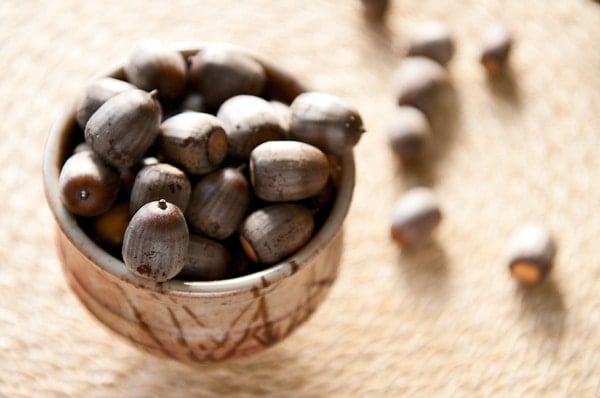
Find It Fast
About
Wild starches are the toughest need for a forager to meet. Greens and fruits are everywhere, but starch can be tough to come by. I’ve begun with acorn recipes, you’ll also find recipes and resources for other wild starches as well, such as wild salsify, arrowhead, sunchokes, cattail and tule tubers — as well as other nuts like the black walnuts, hazelnuts and pine nuts.
If you want to make these recipes, you will need to know about collecting and eating acorns. If acorns are just too weird for you but you want to make something similar, use chestnuts — even canned chestnuts make a good substitute.
Acorns
Basics
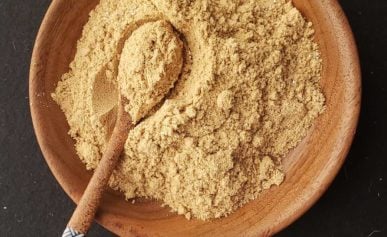
The Best Way to Make Acorn Flour
This process makes the best-quality acorn flour I know of. Yes, there are easier methods, but this is the best.
Read More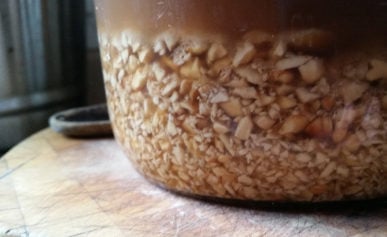
Acorn Grits
Sometimes you don’t want acorn flour. Sometimes you want pieces a bit larger. Here’s how to make acorn grits.
Read More
Acorns and the Forager’s Dilemma
A post on my experiments cooking with acorns. You’ll find a lot of tips on what you can – and can’t – do with acorn flour.
Read More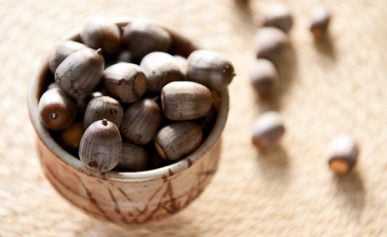
The Mechanics of Eating Acorns
This post includes a lot of nuts-and-bolts information about collecting, processing and storing acorns.
Read MoreRecipes
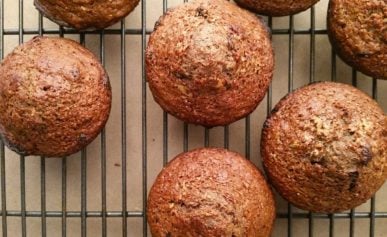
Acorn Muffins
I love these acorn muffins. Made with both acorn flour and some acorn grits, they are like a bran muffin, only better.
Read More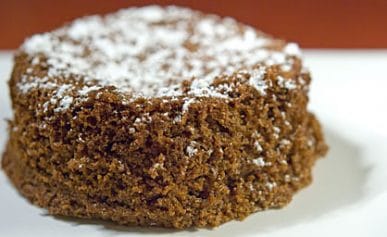
Acorn Cake and Acorns Around the World
This is an overview on how other countries use acorns, and the post includes a recipe for an Italian-style acorn flour cake, which is traditionally made with chestnuts.
Read More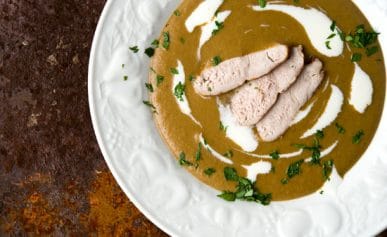
Acorn Soup
A luxurious smooth soup made with acorns, dried porcini and brandy, garnished with sour cream and a few slices of grouse or chicken.
Read More
Acorn Flatbreads
Italian piadine flatbreads – basically flour tortillas – made with a mix of acorn flour and regular flour.
Read More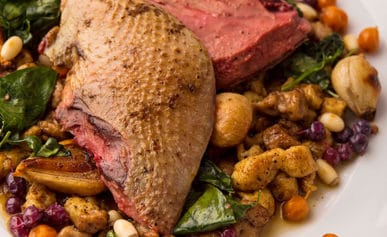
Acorn Spätzle
Maybe my favorite thing to do with acorn flour is to make rustic German spaetzle dumplings. They go great with wild game, especially venison and duck.
Read More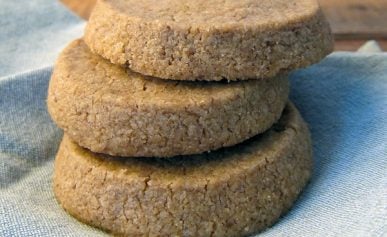
Acorn Maple Shortbread Cookies
Acorns have no gluten, so they are actually perfect for making shortbread cookies! These are crazy good, and they last in a sealed container for weeks. Great road food…
Read MoreOther Starchy Things
Basics
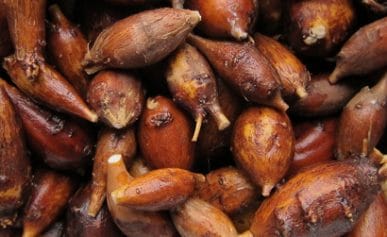
Contemplating Hopniss, the American Groundnut
What you need to know to gather, grow and eat what might be America’s best wild tuber.
Read More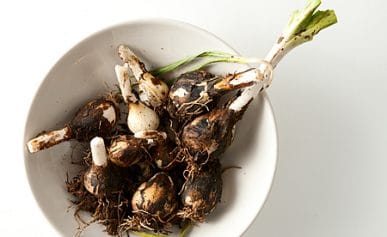
Blue Camas and Other Edible Bulbs
Identifying, harvesting and processing edible wild bulbs, which are staples to native peoples.
Read MoreRecipes
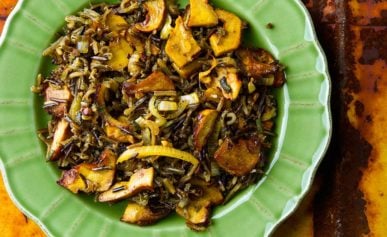
Wild Rice with Mushrooms
Real wild rice is a wonderful thing, very different from typical store-bought cultivated “wild” rice. Either way, though, make this warm salad and you won’t be sad.
Read More
Spaghetti alla Chitarra
Not exactly wild, but this is a great pasta dough for wild game dishes that you can sometimes buy in the store, but definitely make yourself from store-bought ingredients.
Read More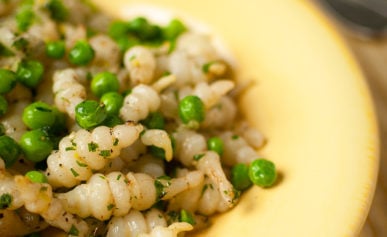
Maybe It’s a Tuber: Crosne
Crosnes or Chinese Artichokes are little starchy-crunchy tubers that look like little Michelin men and taste like water chestnuts.
Read More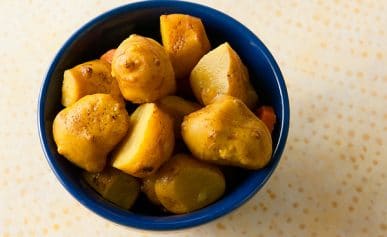
Pickled Jerusalem Artichokes
Maybe the best way to eat sunchokes, a/k/a Jerusalem artichokes. Crunchy, zippy and best of all — no farting!
Read More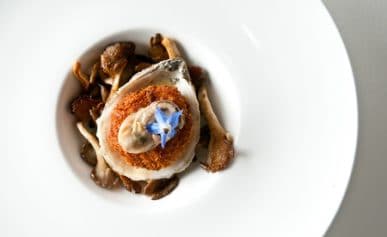
Oyster! Oyster! Oyster!
Salsify or scorzonera a/k/a oyster plant is a cool root vegetable that tastes a bit like artichoke hearts. I love these croquettes — with or without the fancy presentation in this oyster dish.
Read More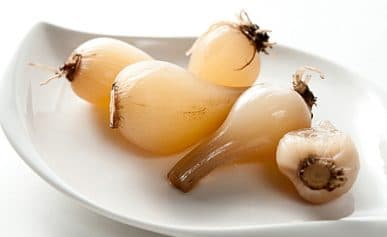
Cooking Blue Camas
Blue camas is a staple bulb of a wildflower eaten by native peoples in the west of the US and Canada. Here’s how to cook it properly.
Read MoreNuts
Basics
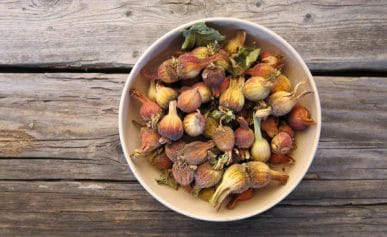
How to Harvest Hazelnuts
This is how I find, collect and harvest wild hazelnuts, which are just like the cultivated ones, only smaller and tastier!
Read More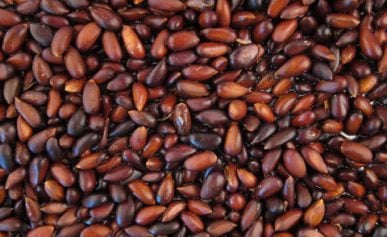
How to Harvest Pine Nuts
How to find, harvest and process wild American pine nuts – these are the piñon pine nuts of the West, with soft shells you can crack with your teeth as a snack if you want to.
Read More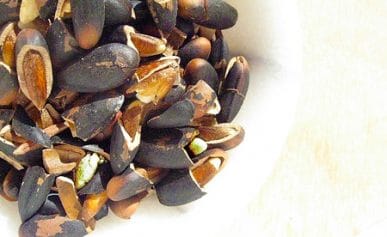
Harvesting Bull Pine Nuts
This post details how to collect and crack the California gray pine nuts, Pinus sabiniana, which are very hard. Gray pines are also called bull or digger pines.
Read More
Black Walnuts and Holiday Cheer
The title pretty much says it all. These nuts are tough to crack, but are very much worth it!
Read MoreRecipes
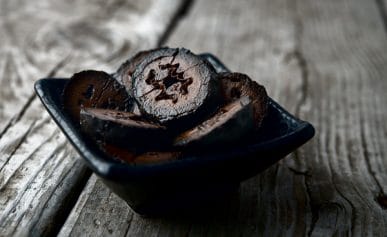
Pickled Walnuts
Pickled walnuts are a classic British condiment, mostly served with cheddar cheese and charcuterie. They also go well with sweet foods, too. You make them with unripe, green walnuts.
Read More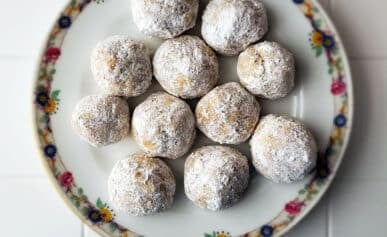
Snowball Cookies with Walnuts
My favorite Christmas cookie! My mom made these with regular walnuts, but I like them better with black walnuts.
Read More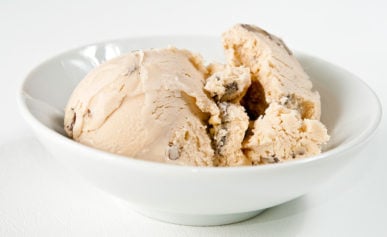
Black Walnut Ice Cream
This is the best black walnut ice cream you will ever eat. Trust me. I have a secret in the recipe…
Read More
Black Walnut Parsley Pesto
Walnut and parsley pesto is a classic Italian winter sauce. It’s even better with wild walnuts and parsley from your garden!
Read More
Pine Nut Ice Cream
An Italian specialty, this is a little like the pistachio ice cream you’re used to, only with wild pine nuts.
Read More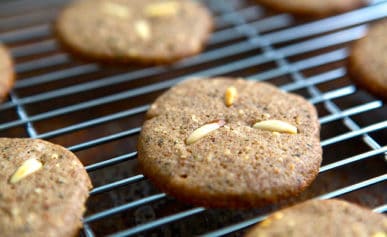
Pine Nut Cookies
It’s a sweet taste of the piney woods. These are awesome cookies made with pine nuts, a little rosemary, and a little acorn flour. Hippie, fer sher, but tasty!
Read More